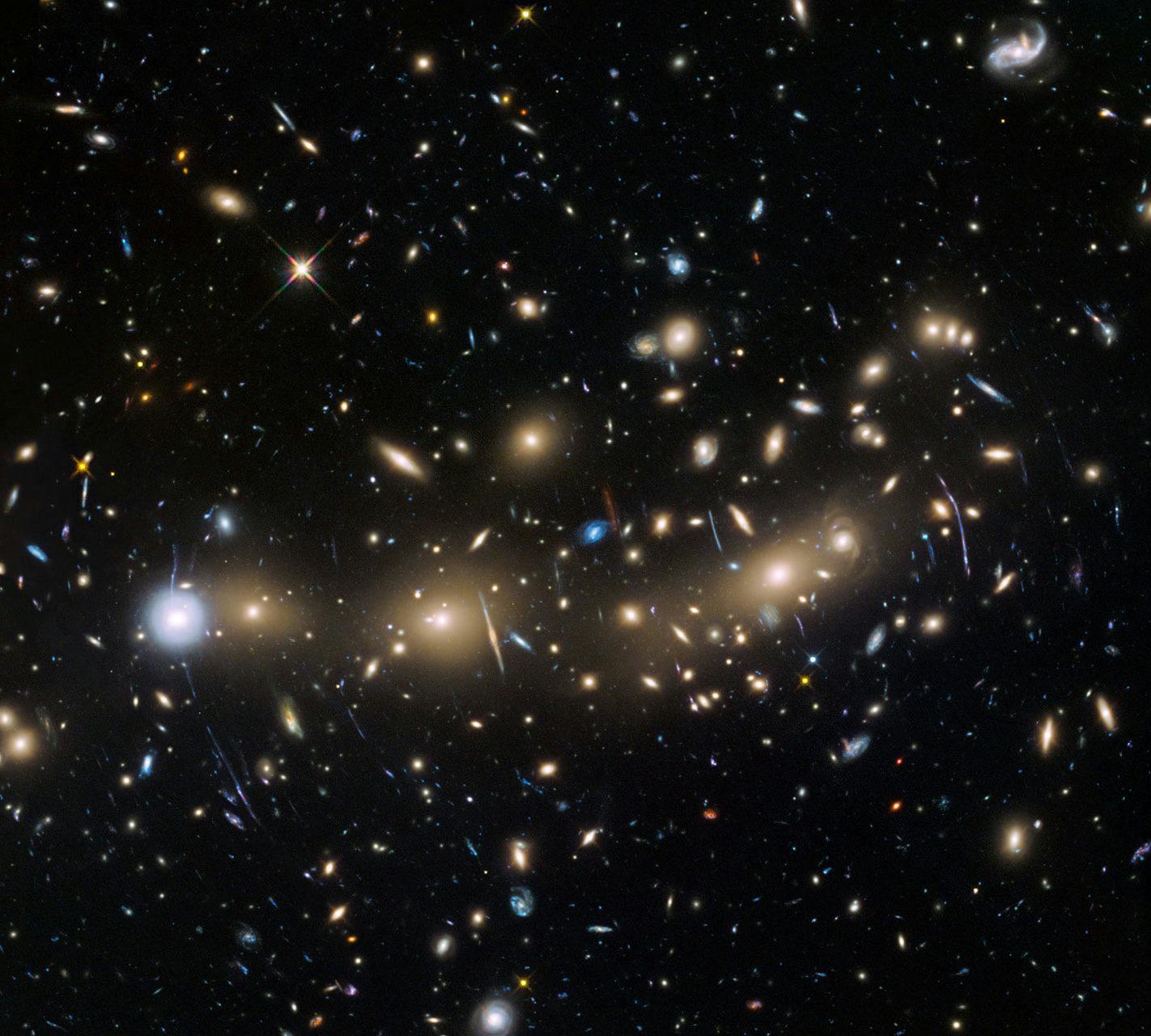
This image from the NASA/ESA Hubble Space Telescope shows the galaxy cluster MACS J0416.1–2403. This is one of six being studied by the Hubble Frontier Fields programme, which together have produced the deepest images of gravitational lensing ever made. Due to the huge mass of the cluster it is bending the light of background objects, acting as a magnifying lens. Astronomers used this and two other clusters to find galaxies which existed only 600 to 900 million years after the Big Bang.
Space is big. The Voyager probe, launched in 1977 to explore Jupiter and Saturn, took 36 years to leave the Solar System. It is the furthest human object from us, and it is still in our neighbourhood.
Even the radio waves we sent into space have barely reached a few hundred star systems, and they are but a drop in the ocean compared to the size of our galaxy (as you can see in the cover photo from this chapter). Light in a vacuum has a velocity of almost 300.000 km/s. That’s how fast information can travel through spacetime in our Universe.
Mass is not information. To accelerate anything with a specific mass you need to provide it with energy. The energy you’re providing is equivalent to a mass: it is like you’re getting more massive as you accelerate towards the speed of light, but you can’t reach it. You’d need to provide infinite energy and reach an infinite mass to travel that fast.
The Universe is big and the speed of light is small. Sci-fi writers had to come up with ways to get around it.
FTL engine and Warp Drive
People might of think this as being exclusively the stuff of science fiction, but it’s being seriously considered by NASA. This type of engine pits special relativity, which talks about the speed of light and space-time dilation, against general relativity, whose subjects are space-time curvature, acceleration, and gravity.
The idea behind the warp drive is remarkably simple. Since gravity shapes space-time, could we simply shape it in a way that shortens our distances? It’s the sweater string approach: when you are putting a string back into the sweater hood you push together the material in front and pull it at the back. In the same way, warp drive engines will compress space-time ahead of a ship and dilate it at the back.
Warp Engines could be dangerous, not for the passengers, but for who’s waiting for them on arrival. Space is empty, but not completely empty. As space is compressed, particles will start accumulating, and, over a short time, they will start fusing together, generating a hot plasma and gamma radiation, which will grow larger as more particles come in. When the spaceship stops, the plasma wave will continue at almost the speed of light, and, depending on the size, it might significantly affect a planet or even a star.
Wormholes
A wormhole is another shortcut through space-time. Or more accurately, outside space-time.
If you want to move between two points on the surface of an apple, the worm has the right strategy of going through rather than along.
In the same way, a wormhole is a way through, moving on a special route between two space-time points. The space-time nomenclature is important: wormholes allow you to travel in space and in time.
The good news is that wormholes are allowed to form in general relativity. The not so good news is that they’re not stable, as soon as they form they disappear again. The only way to make it stable is through exotic matter, matter whose squared energy is negative. Its energy is ‘imaginary’, in a mathematical sense. (Please ask if this is unclear!) So far, no such matter has been observed, but you never know.
Special relativity, fuel, and patience.
Given current technology, and imagining that we can have unlimited fuel on a spaceship, how long do you think it would take us to reach the edge of the visible Universe, which is about 14 billion light-years away? The answer is quite low. 46 years. I know. 46 years. That’s thanks to special relativity!
So, how does that work? In 2013 Physicist Dave Goldberg wrote a very interesting paper on the basics of traveling across an expanding Universe like ours. His solutions are very intelligible and quite straightforward.
The assumption is to have a rocket that would be propelled with an Earth-normal gravity acceleration (9.81 m s-2) in a de Sitter Universe, which is empty so not exactly like ours. The constant acceleration will make the spaceship faster and faster, eventually approaching the speed of light. But that acceleration doesn’t come cheap, we would need to burn a mass equivalent to about half the moon for the journey.
So, we are not there yet. But it’s interesting to know that if we can find the right fuel, galaxies are definitely within our reach.